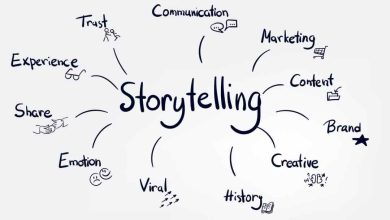Core Marketing Concepts 101
A beginner-friendly guide to the marketing fundamentals that still matter in today's digital age

Whether you’re running a small business, managing a brand, or just starting in marketing, understanding the core marketing concepts is non-negotiable. We must have tried Googling some marketing definitions at one point, either as a marketer helping a business or as a business owner carrying out your own marketing for your business.
Maybe you’ve even come across certain terms that seem familiar, but you can’t explain them. Why? This is because you only know them by name; you haven’t taken the time to engage with them. And now, with the AI revolution changing the way marketers and business owners work, there are even more acronyms to learn.
Hence, the aim of the post. It is to give concise yet simple explanations to each of these marketing terms. The truth is, we can’t exhaust the list in a single post. So, until we exhaust them on our list, be sure you’ll have a good read every week, here.
For better understanding and organisation, the terms are broken down into key categories:
A. Core Marketing Concepts
B. Branding & Communication
C. Digital Marketing
D. Analytics & Performance
E. Content & Copywriting
F. Social Media & Community
G. Strategy & Planning
H. Trends & Technology
I. E-commerce & Sales
A. Core Marketing Concepts
1. Marketing Mix
Without the marketing mix, there wouldn’t be anything to sell in the first place. The 7Ps: Product, Price, Place, Promotion, People, Packaging, and Process are the pillars of any marketing strategy.
They help you in designing offers that your audience truly wants. Although this model seems old, it is evolving and still relevant, especially when blended with data and personalisation.
2. Target Market
This refers to a specific group of people you want to reach in a market. Mind you, it’s not “everyone,” but those who are most likely to benefit from your offer. Your target market is a subset of the total market for a product or service.
The more clearly you define this group, the more effective your message becomes. For example: Instead of “Nigerian professionals,” target “young professionals in Ilorin looking to switch careers.”
3. Buyer Persona
A buyer persona is another core marketing concept to know. In simple terms, this is a profile that shows your ideal customer. It is a semi-fictional profile that represents your ideal customer.
It goes beyond demographics to include goals, motivations, fears, and even content preferences. Creating personas helps you humanise your marketing and speak to real people.
4. Value Proposition
This is your promise to customers. It explains how your product or service will be of solution to your customers’ problems. What unique benefit do you offer that others don’t? A clear, compelling value proposition answers: “Why should I choose you as a brand?”
If you can’t communicate your value in one sentence, you’ll lose attention in seconds, especially in today’s fast-moving digital world.
5. Positioning in Marketing
Positioning is about how your brand is perceived in the mind of your target customer, relative to competitors. It is the thought and image that comes to the mind of your customers when they mention your brand.
Are you the affordable option? The luxury brand? The go-to expert? Positioning is shaped not just by what you say, but also by what people say about you online, such as reviews, comments, and social proof.
6. Segmentation
This involves dividing a broad or your overall market into smaller, manageable groups with shared traits like age, location, buying habits, or income. Why? This is because marketing to “everyone” leads to weak results, as there are many various groups even within your target market.
When done well and the right way, segmentation allows you to tailor your messages and increase relevance.
7. Differentiation in Marketing
Differentiation is about standing out in the competitive marketplace. It also refers to the strategy of distinguishing your product or service to create a unique position in the marketplace.
What makes your product or service unique? It could be your price, your process, your origin story, or even your tone of voice. In a saturated market, how you deliver your message can be just as powerful as what you offer.
8. Customer Journey
This is the path a customer takes from becoming aware of your brand to making a purchase. It is the complete series of experiences that customers go through when engaging with a brand.
Typically, the stages go from: Awareness → Consideration → Decision → Loyalty → Advocacy. Mapping out the journey helps you provide the right content at the right time.
9. Customer Lifecycle
While the journey focuses on the stages of decision-making, the lifecycle is broader. It includes how long a customer stays with your brand. Knowing this helps you increase Customer Lifetime Value (CLTV) by focusing on retaining your customers, not just acquiring them.
10. Touchpoint
A touchpoint is any moment your customer interacts with your brand. It could be through a tweet, a sales call, or your website homepage. Each touchpoint either builds or breaks trust. In this fast-paced age, where attention spans are short, every touchpoint needs to be intentional and on-brand.
Conclusion
If you want to grow your business or career in marketing, mastering these core marketing concepts is your first step. Don’t rush past the basics; build on them. Whether you’re launching a campaign or building a brand from scratch, these 10 principles will ground your efforts in strategy, not guesswork.




